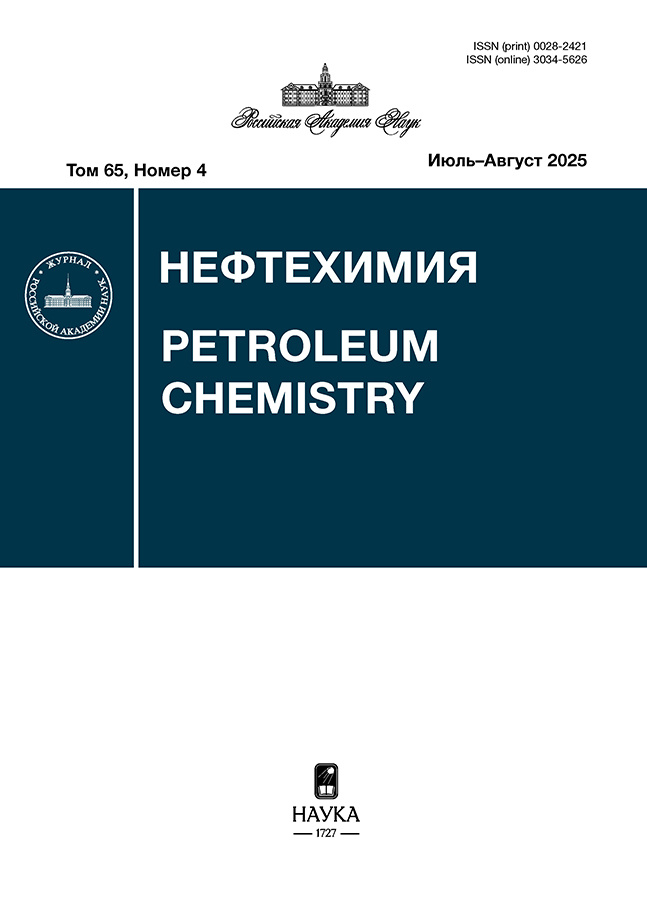Совместимость уреатных пластичных смазок с другими типами смазок
- 作者: Lyadov A.S.1, Kochubeiev A.A.1, Parenago O.P.1, Kirilov V.V.2
-
隶属关系:
- Institute of Petroleum Chemistry named after A.V. Topchiev of the Russian Academy of Sciences
- Joint Stock Company 'Electrogorsk Institute of Oil Refining named after Academician Khadzhiev Salam Bek Naibovich'
- 期: 卷 65, 编号 4 (2025)
- 页面: 330-338
- 栏目: Articles
- URL: https://freezetech.ru/0028-2421/article/view/693426
- DOI: https://doi.org/10.31857/S0028242125040066
- ID: 693426
如何引用文章
详细
In this work, a methodology for assessing the compatibility of various types of plastic lubricants is presented and tested. This methodology includes thermal treatment of mechanical mixtures of lubricants (80°C for 24 h) followed by the determination of the physicochemical properties of the resulting compositions. This method has been used to establish the feasibility of the joint use of urea (urea-based) lubricants with lithium, calcium, lithium-calcium, aluminum, and bentonite lubricants. It has been shown that the most important factor for compatibility is the nature of the base oils: mixing lubricants based on synthetic and mineral bases can lead to a significant decrease in the dropping point temperature (which creates a risk of leakage from friction nodes), changes in colloidal stability, and strength limits (which may require additional evaluation of thermal characteristics and structural-mechanical properties of mixtures). The tribological behavior of urea mixtures with other lubricants does not undergo significant changes. This approach provides a scientifically sound choice of compatible lubricating materials and allows for minimizing risks in the maintenance of industrial equipment.
作者简介
A. Lyadov
Institute of Petroleum Chemistry named after A.V. Topchiev of the Russian Academy of Sciences
Email: lyadov@ips.ac.ru
Moscow, 119991 Russia
A. Kochubeiev
Institute of Petroleum Chemistry named after A.V. Topchiev of the Russian Academy of Sciences
Email: lyadov@ips.ac.ru
Moscow, 119991 Russia
O. Parenago
Institute of Petroleum Chemistry named after A.V. Topchiev of the Russian Academy of Sciences
Email: lyadov@ips.ac.ru
Moscow, 119991 Russia
V. Kirilov
Joint Stock Company 'Electrogorsk Institute of Oil Refining named after Academician Khadzhiev Salam Bek Naibovich'
编辑信件的主要联系方式.
Email: lyadov@ips.ac.ru
Electrogorsk, Moscow Region, 142530 Russia
参考
- Lubricants and lubrication / W. Dresel, T. Mang, eds. 2017. Print ISBN: 9783527326709. https://doi.org/10.1002/9783527645565
- Rawat S.S., Harsha A.P. Current and future trends in grease lubrication. In: Automotive tribology (energy, environment, and sustainability) / J. Katiyar, S. Bhattacharya, V. Patel, V. Kumar, eds. Spr inger, Singapore, 2019, 343 pp. https://doi.org/10.1007/978-981-15-0434-1_9
- Lyadov A.S., Maksimova Yu.M., Shakhmatova A.S., Kirillov V.V., Parenago O.P. Urea (polyurea) greases // Russ. J. Appl. Chem. 2018. V. 91. № 6. P. 885–894. https://doi.org/10.1134/S1070427218060010
- Cousseau T. Grease lubrication: formulation effects on tribological performance. Tribology of machine elements // Fundamentals and Applications (G. Pintaude, T. Cousseau, A. Rudawska, eds.) – IntechOpen, 2022. http://dx.doi.org/10.5772/intechopen.101549
- Rush R.E. A review of the more common standard grease tests in use today // Lubrication Engineering. 1997. V. 53. № 3. P. 17–26.
- Sosa Yu. An update on lithium base greases // Tribology & Lubrication Technology. 2024. V. 80. № 12. P. 30–36.
- Antonov S.A., Bartko R.V., Nikul’shin P.A., Kilyakova A.Yu., Tonkonogov B.P., Danilov A.M. The current state of development of greases // Chem. Technol. Fuels Oils. 2015. V. 57. P. 279–288. https://doi.org/10.1007/s10553-021-01247-6
- Gurt A., Khonsari M. An overview of grease water resistance // Lubricants. 2020. V. 8. № 9. ID 86. https://doi.org/10.3390/lubricants8090086
- Xia Y., Wen Z., Feng X. Tribological properties of a lithium-calcium grease // Chem. Technol. Fuels Oils. 2015. V. 51. P. 10–16. https://doi.org/10.1007/s10553-015-0569-x
补充文件









